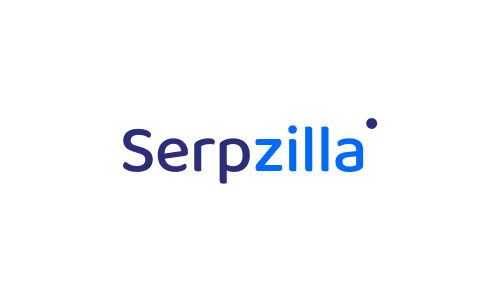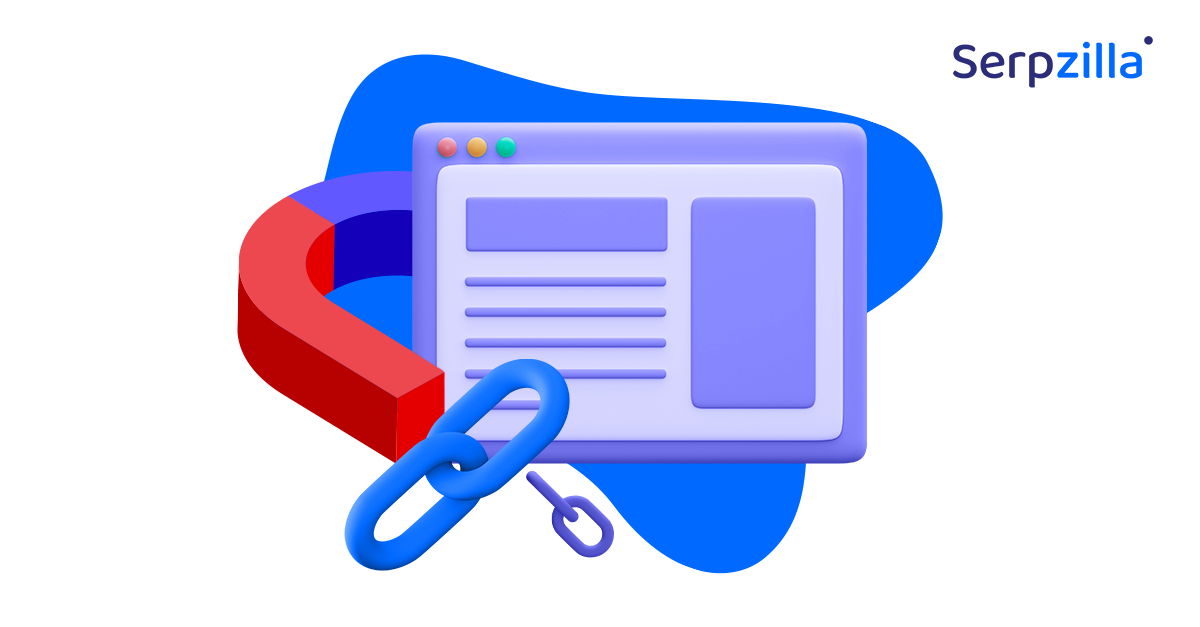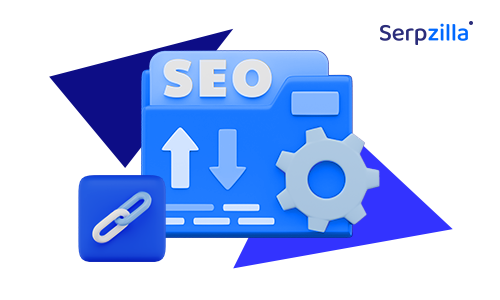If you want to make money on your blog in 2025, writing just about anything isn’t going to do the trick. The blogosphere is very crowded, and many successful bloggers understand that you need to select a topic that resonates with your audience. Furthermore, you need your audience to be engaged and present interest for potential advertisers.
In 2025, standing out among your competitors takes more than just choosing a popular topic — you need to go niche. Or better yet, micro niche. In this article, you’ll learn how to find a profitable micro niche for a blog and provide a categorized list of the best micro niche blog ideas with examples and monetization strategies.
What Is a Micro Niche?
A micro niche is an ultra-specific segment of a broader topic. Instead of writing about fitness, for example, a micro niche might focus solely on “postpartum home workouts for new moms.” Rather than launching a finance blog, a more profitable micro niche could be “retirement planning for freelancers in the U.S.”
Why Choose a Micro Niche Over a Broad Topic?
Here’s why micro niche blogs are outperforming generalist blogs in 2025:
- Lower Competition: Broad topics like “technology” or “beauty” are oversaturated. Micro niches allow you to compete in smaller ponds where it’s easier to rank on Google.
- Higher Engagement: When you’re able to provide something that everyone else has, but with a twist, you can reach an audience that’s highly targeted and passionate. They’re more likely to read your content in-depth, subscribe, click on affiliate links, or buy recommended products.
- Better Monetization: The tighter the niche, the easier it is to promote highly relevant products or services. Better targeted audiences mean that the conversion rate could be much higher. Yes, going niche usually narrows your reach but think of it like this: Is it better to have 1 conversion out of 1000 or 10 out of 100?
Micro Niche Blog Examples:
| Broad Niche | Micro Niche Blog Example |
| Health | Intermittent fasting for women over 50 |
| Finance | FIRE (Financial Independence Retire Early) for millennials |
| Tech | Raspberry Pi projects for students |
| Travel | Backpacking routes for solo female travelers |
| Lifestyle | Minimalist parenting for city dwellers |
Criteria for Choosing a Profitable Micro-Niche
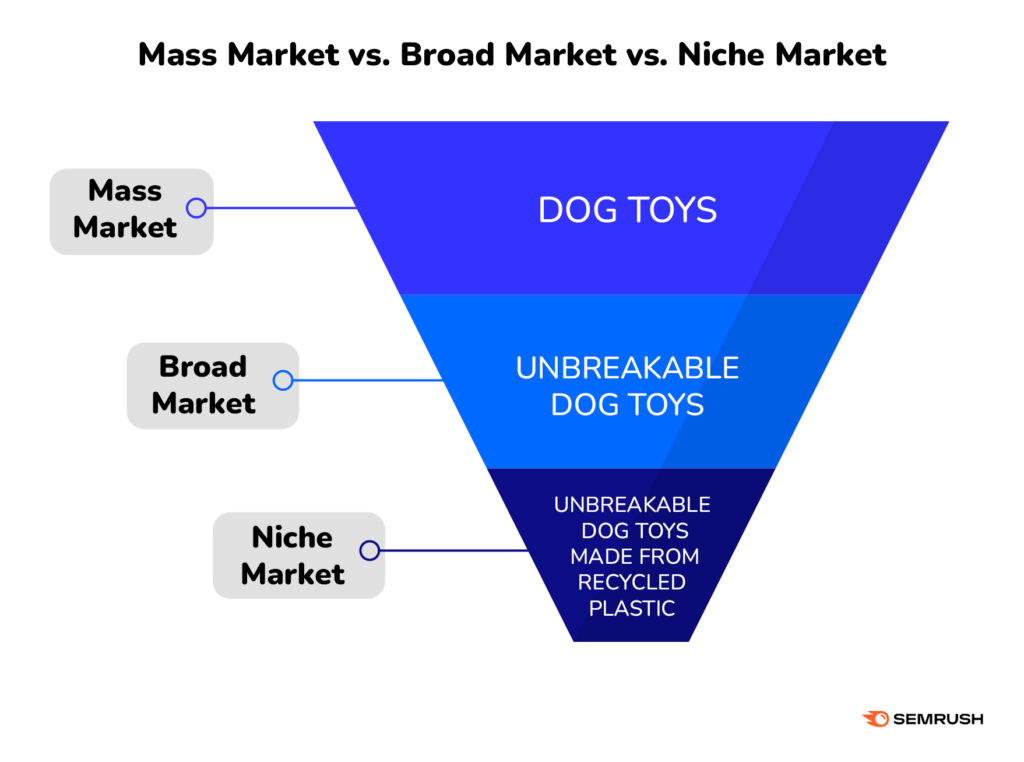
If you’re reading this, you want to start a blog and you probably already have a general topic idea in mind. Before you try to narrow it down, it’s good practice to evaluate every potential niche against several key criteria. Here’s what you need to look at:
1. Passion & Expertise
You don’t need to be a certified expert, but the topic has to be genuinely interesting to you personally. If you’re passionate about your topic, you’ll create better content and avoid burnout. It will be much easier for you to research, to dig deeper, and to build a POV that will set you apart. Also consider:
- Personal experience: Your own stories will resonate with the audience better.
- Time, tools, and knowledge for research: If you want to blog about developing mRNA-based drugs that deliver genetic instructions to cells but don’t know the first thing about medicine, blogging about getting into medical studies would be a better idea.
- Ability to connect with the audience: Do you know who your average reader is — age, occupation, geolocation? Do you have things in common with them? Will they listen to you? If yes, why?
2. Search Volume & SEO Potential
Your micro niche should have enough monthly search volume to justify creating content. Use tools like Google Keyword Planner, Ahrefs, or Ubersuggest to validate your niche. Ideally, look for keywords with:
- 1,000–10,000 monthly searches
- Low to medium competition
- Long-tail phrases
Example: “Low sugar dessert recipes for diabetics” has lower competition but highly relevant traffic.
3. Monetization Opportunities
Can you promote affiliate products? Sell digital courses? Accept guest posts? Sell backlinks? Do collaborations with manufacturers or service providers in your niche? Make sure your niche has at least several income streams. Look at:
- Ability to sell backlinks on Serpzilla
- Affiliate program availability (Amazon, ShareASale, ClickBank, iHerb)
- Product relevance (ebooks, coaching, DYI, physical goods)
- Advertiser interest (AdSense CPC, direct partnerships)
4. Evergreen Content Potential
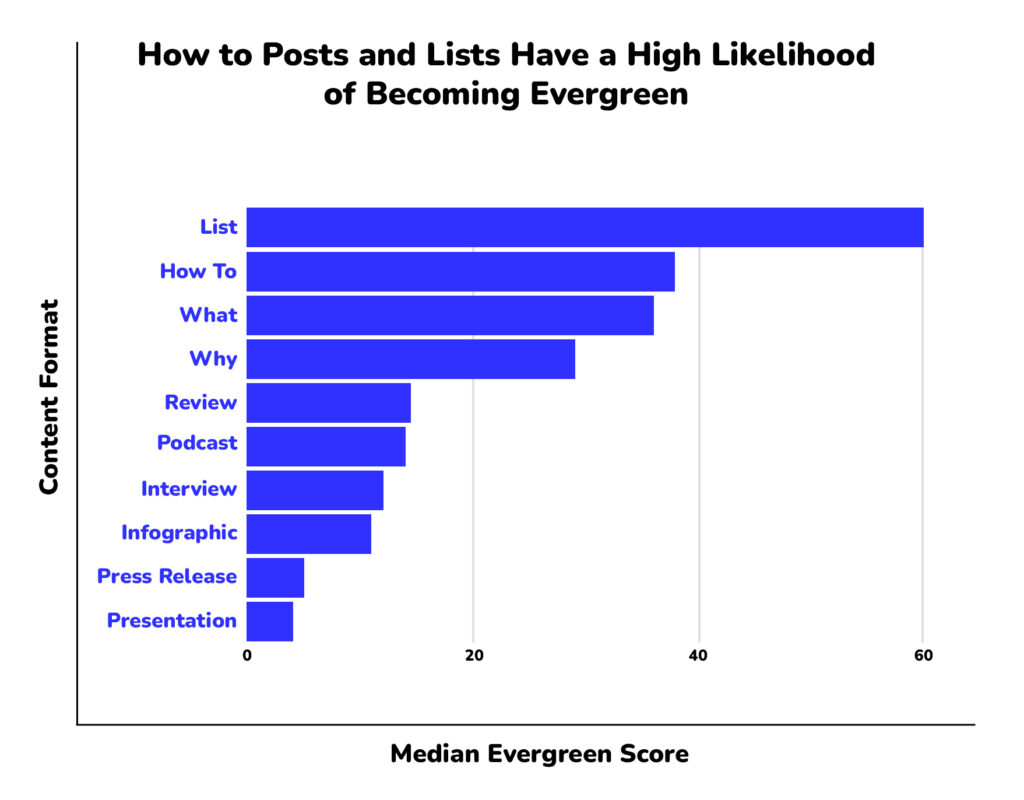
Is your topic future-proof? Avoid fads and short-term trends. Micro niches that offer consistent, evergreen traffic over years are more sustainable.
Examples: “Indoor gardening for apartments” or “Pet care tips for senior dogs” remain relevant long-term.
💡Pro Tip: Here’s a good way to quickly check if your niche tends to be evergreen. Think of a piece of content you would create today, like an article, a blog post, or a review. Now answer this question: Will it still be useful and relevant 5 years from now?
5. Clear Target Audience
Define your potential readers as precisely as possible:
- Who are they? (e.g., new dads, digital nomads, diabetic teens)
- What problems are they trying to solve?
- What products or services are they likely to need?
💡Pro Tip: Before getting started, create a detailed User Persona. This document should outline your average reader in as much detail as possible: Who are they? What’s their age, social background, and demographic group? What are their interests, preferences, lifestyle, income level? How do they like to spend money? Where do they live?
The better you understand your audience, the more precisely you can tailor your content. And the greater your chances you have of getting them to take action.
List of High-Potential Micro-Niche Ideas
Below is the list of profitable micro niche examples, grouped into larger categories. For each we have described niche-specific monetization tactics. There are also monetization opportunities that suit every niche, such as selling links with Serpzilla. We will talk about them below.
Health & Wellness
Low-FODMAP Meal Plans
- What you’ll be blogging about: Healthy eating is a very broad topic, as what is considered healthy for one person can harm another. That’s why it’s a perfect general topic that contains multiple micro niches. You can cover several adjacent micro-niches and focus on several dieting plans.
- Monetization Strategies: Sell digital meal plans, affiliate links to low-FODMAP recipe books and supplements, display ads, publish guest posts for product vendors, cookbook authors, and support groups.
- Target Audience: Adults managing various digestive sensitivities, such as IBS.
- Search Volume: ~3,000–6,000 per month for related keywords like “low FODMAP meal plan,” “IBS diet”.
- Why is it profitable? In the US alone, 60 to 70 million people live with a digestive disease. Managing one is not an easy matter, and maintaining a healthy diet customized for a specific disease is often cheaper and easier than treatment.
Prenatal Yoga Routines
- What you’ll be blogging about: You can wax poetic about the benefits of yoga for pregnant women and create routines that consider pregnancy limitations. You can also post meditations, daily yoga bits and habits, and asanas that help with back pain, fatigue, or swelling.
- Monetization Strategies: Online video classes, yoga mat/equipment affiliate links, YouTube channel with ad revenue, guest posts for service providers, other yoga blogs.
- Target Audience: Pregnant women with various lifestyles who want to stay active safely.
- Search Volume: ~2,000–4,000 per month (e.g., “prenatal yoga video,” “yoga for pregnancy”).
- Why is it profitable? Expectant moms are a highly engaged audience. They actively seek safe fitness routines and wellness advice during pregnancy and tend to recommend a good resource when they find it.
Finance
Budgeting Tips for Single Parents
- What you’ll be blogging about: Strategies for tracking expenses, meal planning on a budget, low-cost child care hacks, financial aid resources, side-income streams.
- Monetization Strategies: Affiliate links to budgeting apps, sponsored posts from fintech startups, AdSense.
- Target Audience: Single moms and dads looking to manage household finances.
- Search Volume: ~1,500–3,000 per month for long-tail keywords like “budgeting for single moms,” “single parent money tips”.
- Why is it profitable? In the U.S., almost 10 million single-parent households exist, typically with one income to stretch. This audience actively seeks cost-saving tools and services, making app affiliate programs and financial coaching ads highly lucrative.
Passive Income Through Dividend Stocks in the USA
- What you’ll be blogging about: Dividend stock picks, portfolio building guides, tax considerations, quarterly cash flow tracking, rebalancing strategies.
- Monetization Strategies: Affiliate links to brokerage platforms (eToro, Robinhood), premium investment courses, ebook sales, display ads.
- Target Audience: Young professionals and retirees who are looking for ways to generate passive income.
- Search Volume: ~8,000–12,000 per month (“dividend income,” “best dividend stocks USA”).
- Why is it profitable? Dividend investing assets in the U.S. exceeded $4.9 trillion in 2023. With growing interest in passive income among millennials and boomers, affiliate payouts from brokerages and course conversions deliver solid returns.
Technology
AI Tools for Solopreneurs
- What you’ll be blogging about: Use cases for various LLM models and specific AI tools, prompt engineering for self-employed and prompt specifics; tool comparisons, productivity workflows, and ethical use of AI.
- Monetization Strategies: Affiliate reviews, SaaS partnerships, tool comparison guides, courses.
- Target Audience: Freelancers, consultants, digital entrepreneurs, self-employed or those who are considering going solo.
- Search Volume: ~3,500–6,000/month (“AI tools for small business,” “best AI tools for productivity”).
- Why is it profitable? The AI software market is projected to reach $126 billion by 2025, with a growing segment for small-business and solo-user tools. Affiliate marketing for AI platforms often includes monthly recurring commissions, which gives excellent long-term revenue.
Cybersecurity for Small Business Websites
- What you’ll be blogging about: Guide to SSL, firewalls, malware detection, hosting security checks, breach recovery steps. Simple security hacks for smaller websites and low-maintenance security practices.
- Monetization Strategies: Affiliate to security software, sponsored audits, email course funnels, monetized YouTube.
- Target Audience: Small business owners and entrepreneurs with limited technical background.
- Search Volume: ~2,500–5,000 per month (“website security for small business,” “cybersecurity tips for business”).
- Why is it profitable? SMB cybercrime costs reached $2.7 trillion globally in 2022, driving increased demand for protective tools. Every small business owner becomes a lead for antivirus, firewall, and cybersecurity tools, yielding high affiliate payouts.
Fashion & Beauty
Skincare for Sensitive and Problem-Prone Skin
- What you’ll be blogging about: Deep dives into skincare ingredient science, routines for eczema and rosacea, weekly product reviews, seasonal skin-care guides, and interviews with dermatologists. Think of it as your “sensitive-skin bible.”
- Monetization Strategies: Affiliate links to hypoallergenic products, sponsored posts from skincare brands, display ads, guest posts from dermatologists, and digital training materials.
- Target Audience: Teens to middle-aged adults struggling with a variety of skin conditions such as acne, redness, eczema, or sensitivity.
- Search Volume: ~5,000–8,000 per month (“skincare routine for sensitive skin”, “best products for acne-prone skin”).
- Why is it profitable? Up to 71% of adults report having sensitive skin, with 44.6% of Americans saying their skin reacts frequently. Dermatological products represent a multi-billion-dollar market. This niche commands high CPC ads and premium affiliate commissions — it is literally an advertising and commerce hotspot.
Modest Fashion for Young Muslim Women
- What you’ll be blogging about: Hijab styling guides, seasonal modest wardrobe capsules, street style for Eid/Ramadan, modest fashion trends.
- Monetization Strategies: Affiliate links to modest fashion retailers, Instagram collabs, digital lookbooks, brand sponsorships.
- Target Audience: Gen Z and Millennial Muslim women globally.
- Search Volume: ~3,000–5,000 per month (“modest fashion ideas,” “hijab fashion blog”).
- Why is it profitable? The global modest fashion market is valued at $277 billion (2024) and projected to grow 5.5% annually. This is quite the rise in spending power. You can garner high-value partnerships and capitalize on affiliate programs. The niche is global, which makes your reach huge.
Insurance
Pet Insurance
- What you’ll be blogging about: Policy comparisons, vet cost breakdowns, breed-specific care costs, claim tips. You can also focus on a particular geolocation, such as the US, or go global and compare policies in different countries, cover travel insurance for pets, etc.
- Monetization Strategies: Affiliate links to insurance providers, review posts, organic lead generation.
- Target Audience: Pet owners, especially dog/cat families.
- Search Volume: ~4,000–6,000 per month (“pet insurance cost,” “best pet insurance reviews”).
- Why is it profitable? US pet care spending topped $136 billion in 2022, with insurance as the fastest‑growing (20% YoY). Insurance providers pay generous affiliate fees for leads.
Health Insurance for Digital Nomads
- What you’ll be blogging about: Policy comparisons, claim process walkthroughs, location-specific coverage guides, and emergency tips.
- Monetization Strategies: Affiliate links to nomad-specific insurers, sponsored content, travel brand partnerships.
- Target Audience: Remote workers and digital nomads.
- Search Volume: ~2,000–3,000 per month (“digital nomad insurance,” “travel insurance remote work”).
- Why is it profitable? The digital nomad population swelled to 35 million in 2024, with insurance among their top expenses. Most countries that issue digital nomad visas also require a level of income which often exceeds the average. Health insurance for nomads themselves and their families is often another legal requirement. It means that digital nomads have money and they are often obliged to get a private insurance plan. But it also means they’ll want to know all about it before they get one. High average policy values mean substantial affiliate payouts.
Lifestyle
Eco-Friendly Habits for Urban Minimalists
- What you’ll be blogging about: Zero‑waste swaps, minimal home design, sustainable shopping, urban composting hacks, decluttering, upcycling, and recycling.
- Monetization Strategies: Affiliate links to sustainable products, ebook sales, brand partnerships, influencer collabs.
- Target Audience: Eco-conscious urban adults (aged 20–45).
- Search Volume: ~1,000–2,000 per month (“urban minimalism,” “zero waste tips city”).
- Why is it profitable? The sustainability market is projected to reach $150 billion by 2030 and urban minimalists are key consumers. Green affiliate programs are emerging with good margins, so you might be an early bird to this spending party.
Productivity Hacks for Remote Workers
- What you’ll be blogging about: Time-blocking routines, AI productivity tools, work-life balance strategies, workspace design.
- Monetization Strategies: Affiliate links (e.g., Notion, Trello), course sales, sponsored software reviews.
- Target Audience: Freelancers, remote employees, distributed teams.
- Search Volume: ~3,000–5,000 per month (“remote work tips,” “productivity for remote workers”).
- Why is it profitable? With 30% of the U.S. workforce being remote in 2025, remote productivity tools rank high in affiliate commissions. Your target audience is working adults who value comfort and life-work balance, so they are willing to pay for what makes their life easier. Lifestyle blogs are also very popular for businesses who promote through guest blogging.
Personal Development
Journaling for Anxiety Management
- What you’ll be blogging about: Daily prompts, anxiety‑reducing practices, pen-to-paper therapy techniques, guest expert tips.
- Monetization Strategies: Sell printable templates, affiliate links to journals/apps, sponsored mindfulness brands.
- Target Audience: Teens to mid‑30s, mental wellness seekers.
- Search Volume: ~2,000–3,500 per month (“journaling for anxiety,” “mental health journal prompts”).
Why is it profitable? The global mental wellness market surpassed $121 billion in 2024, with journaling emerging as a popular self-care tool.
Confidence Building for Introverts
- What you’ll be blogging about: Self-esteem tips, social scripts, speaker preparation, confidence challenges, various personality types.
Monetization Strategies: Ebooks, online courses, affiliate coaching programs, paid-for self-diagnosis tests. - Target Audience: Introverted professionals, university students.
- Search Volume: ~1,500–2,500 per month (“confidence tips for introverts,” “how to be confident shy”).
- Why is it profitable? The online personal development market exceeds $56 billion; introverts actively buy ebooks and coaching, and often prefer resources they can explore on their own to interactivity in communities.
Food & Cooking
Healthy Eating for Lactose-Intolerant People
- What you’ll be blogging about: Dairy-free swaps (cheese, milk, yogurts), lactose-free recipes (smoothies, baked goods, savory dishes), calcium/nutrient alternatives, meal prep for families.
- Monetization Strategies: Ebooks and recipe books, affiliate links to lactose-free products, display ads, sponsored posts from dairy-alternative brands.
- Target Audience: Adults and kids with lactose intolerance, families adjusting to dairy-free diets.
- Search Volume: ~4,000–7,000 per month (“lactose-free recipes,” “dairy-free meal ideas”).
- Why is it profitable? About 65% of adults don’t fully digest lactose, and 30–50 million Americans suffer from lactose intolerance. That’s a vast audience actively seeking dietary solutions and alternative products. It means repeat traffic with strong affiliate and ad revenue potential.
Budget-Friendly Gourmet Cooking
- What you’ll be blogging about: Gourmet recipes using affordable ingredients, ingredient substitutions, smart grocery shopping, restaurant-class cooking techniques at home.
- Monetization Strategies: Cookbook sales, affiliate links to kitchen gadgets, display ads, sponsored content from food brands, influencer collabs and guest blogging, monetized YouTube.
- Target Audience: Home cooks, couples, students, and food lovers on a budget.
- Search Volume: ~2,500–4,500 per month (“cheap gourmet meals,” “budget cooking blog”).
- Why is it profitable? Post‑pandemic, home cooking rose by 35%, and people want restaurant-quality meals without restaurant prices. This drives demand for cooking content and tools — something from which kitchen affiliates benefit greatly.
Real Estate
Real Estate Investing for Gen Z
- What you’ll be blogging about: House hacking, REIT investing, co‑living rentals, saving for a down payment, budgeting advice, first-time property purchases.
- Monetization Strategies: Affiliate links to real‑estate platforms (Roofstock, Fundrise), ebooks, online courses, display ads.
- Target Audience: Young adults (18–35) starting their real-estate investment journeys.
- Search Volume: ~4,000–6,000 per month (“real estate investing young adults,” “first rental property tips”).
- Why is it profitable? The U.S. real estate investment market exceeded $20 trillion in 2023 and yet, it’s harder to buy property in the U.S. than ever before. The problem for the younger generation is specifically acute. This is why they are eager for information that will help them to plan their purchase and save up. New house shoppers are highly engaged — they’re looking for platforms and educational content, which is perfect for affiliate and course revenue.
Tiny House Living and Off‑Grid Real Estate
- What you’ll be blogging about: Land selection, zoning, solar power, off-grid plumbing, sustainable tiny home design, and DIY building.
- Monetization Strategies: Affiliate links (solar kits, compost toilets), sponsorships, video tutorials, digital plans.
- Target Audience: Minimalists, eco-living advocates, remote workers, generally those who can’t afford buying/renting accommodation.
- Search Volume: ~5,000–7,00 per /month (“tiny house off grid,” “tiny home build guide”).
- Why is it profitable? The tiny home market is valued at $1.6 billion in North America and growing. The number of cities where an average income can no longer allow you to afford rent or qualify for a mortgage is also growing fast. This is why tiny houses and off-grid living are on the rise. High-ticket affiliate links and building-plan sales generate solid returns.
Travel
Eco-Friendly and Sustainable Travel
- What you’ll be blogging about: Zero-waste packing, carbon-offsetting, eco-lodging reviews, local conservation projects, ethical wildlife encounters.
- Monetization Strategies: Affiliate links (reusable gear, carbon offsets), sponsored stays, display ads.
- Target Audience: Environmentally-conscious travelers aged 20–45.
- Search Volume: ~3,000–5,000 per month (“sustainable travel tips,” “eco-friendly travel blog”).
- Why is it profitable? The sustainable travel market is projected to reach $338 billion by 2027. Travelers are prepared to pay extra for eco-friendly gear and experiences, giving high affiliate commissions and partnership opportunities with accommodation owners.
Luxury Travel on a Budget
- What you’ll be blogging about: Airline points hacking, discounted luxury stays, best times to book business class, premium travel tech, unique travelling experiences on a budget.
- Monetization Strategies: Credit card affiliate programs, hotel platform partnerships, luxury gear affiliates, collabs with Airbnb owners.
- Target Audience: Mid-income travelers wanting premium experiences affordably.
- Search Volume: ~6,000–9,000 per month (“luxury travel cheap,” “travel hacking blog”).
- Why is it profitable? Travel hacking is booming: users spend an average of over $3,500 on premium travel annually. With lucrative affiliate payouts on credit cards and hotel bookings, this niche converts well.
Garden & Home
Indoor Gardening for Small Apartments
- What you’ll be blogging about: Low-light houseplants, DIY planters, hydroponics setups, pet-safe gardening, seasonal plant care.
- Monetization Strategies: Affiliate links (planters, soil kits), ebooks, video tutorials, collabs with influencers, garden shops, plant swap organizers.
- Target Audience: Urban renters, plant lovers in apartments.
- Search Volume: ~4,000–6,000 per month (“indoor gardening tips,” “grow herbs indoors”).
- Why is it profitable? The indoor gardening market grew 45% in 2024 with increasing demand for home greenery. Frequent buybacks (soil, lights) drive ongoing purchases and affiliate income.
Backyard Permaculture for Suburbs
- What you’ll be blogging about: Food forests, companion planting, composting, wildlife-friendly gardens, DIY irrigation, gardening in limited space, city gardening, backyard design.
- Monetization Strategies: Affiliate tools, selling permaculture plans, display ads.
- Target Audience: Suburban homeowners and eco-conscious gardeners.
- Search Volume: ~2,000–4,000 per month (“permaculture backyard design,” “suburban gardening ideas”).
- Why is it profitable? The permaculture movement has surged 25% in recent years, and eco-conscious gardening tools are gaining traction. High affiliate links for sustainable gardening products provide ongoing revenue.
Home Decor
Scandinavian Interior Design on a Budget
- What you’ll be blogging about: Nordic color palettes, IKEA hacks, minimalist layouts, small space organization.
- Monetization Strategies: Affiliate furniture links, digital room plans, display ads, guest posts, monetized Youtube channel.
- Target Audience: Urban dwellers, budget-conscious decor seekers, IKEA lovers.
- Search Volume: ~3,000–6,000 per month (“Scandinavian decor tips,” “IKEA DYI”).
- Why is it profitable? The home decor market reached $838 billion in 2022, with Scandinavian design among the most popular trends. Affordable home solutions and digital guides are valuable income sources when it comes to backlink sales, guest blogging, and affiliate programs.
DIY Home Decor for Renters
- What you’ll be blogging about: No-nail upgrades, removable wallpapers, seasonal styling, home staging, DIY luxury replica hacks.
- Monetization Strategies: Affiliate home decor tools, sponsored content, ebooks/manuals.
- Target Audience: Renters, students, first-time tenants, DIY lovers.
- Search Volume: ~2,000–4,000 per month (“renter-friendly home decor,” “DIY apartment decoration”).
- Why is it profitable? Rental housing represents about 36% of U.S. homes, with ongoing demand for inexpensive decor upgrades. DIY tools and rental-friendly products drive affiliate revenue.
Monetization Strategies for Micro-Niche Blogs
No matter which micro niche you choose, there are several monetization strategies that will work for all of them, regardless of the topic. Yes, there might be some niche-specific nuances, but the general idea is the same. Below are the top ways to monetize a micro-niche blog in 2025.
Selling Backlinks & Link Placements
One of the most highly profitable methods of monetizing a micro-niche blog is by selling backlinks. When your blog has built a solid SEO foundation and domain authority, other websites will pay to place links in your content, particularly within relevant, evergreen articles.
💡 Use Serpzilla to automate this process.
Serpzilla is a trusted link-building marketplace that allows you to list your blog and get paid for placing high-quality, SEO-boosting links for others. Setting everything up is simple, and once you’ve done it, you’ll only need to monitor and tweak it. Here’s how it works:
- You register your site on Serpzilla.
- Buyers find you through Serpzilla’s intelligent and finely tuned link placement search and request placements.
- You can set your own prices or use Serpzilla’s smart automated pricing feature: it’s based on site characteristics and user demand. You also control link placement rules and approval rules.
- Once approved, you place the link and get paid — often $20–$150+ per link, depending on niche and site authority.
Here’s a detailed guide on how to monetize your blog or website traffic by selling backlinks.
Why it works especially well in micro niches:
Micro niche blogs tend to have tightly relevant content, which makes links appear natural to both readers and search engines, exactly what your potential link buyers want. It’s also much easier and quicker to gain domain authority when you are a niche blog. Niche authority increases your blog’s value, allowing you to charge higher rates.
Guest Posting
Another highly profitable avenue is paid guest posts. Brands and agencies often seek out niche-specific blogs to publish content that promotes their services and includes contextual backlinks. These posts are usually provided by the buyer, and you’re paid simply to host them. But if your blog is famous for its brand voice, you can create the content yourself.
💡 Serpzilla offers tools to sell guest post placements and automate the process.
Through our platform, you can:
- Offer pricing tiers
- Get matched with buyers looking for exactly your type of blog
- Handle everything in one dashboard, including content approval and payments
Rates range from $50 to $300 per post, depending on the niche, traffic, and DA.
Why micro niches perform well:
Guest posting thrives on context and relevance. Brands aren’t just looking for any blog — they’re looking for a blog that:
- Matches their product’s audience
- Has topical authority within a specific domain
- Won’t raise red flags with Google
Micro niche blogs are ideal because:
- Laser-focused content makes link placements look natural and unforced.
- Smaller, more engaged audiences mean higher CTR and conversion rates.
- Topical relevance improves SEO outcomes for buyers because guest posts on a tightly themed site pass more link juice than on a generic one.
📈 According to Backlinko, niche-specific backlinks are 3.8 times more effective than generic ones for improving rankings. That makes micro niche blog owners highly desirable partners who are able to charge premium prices for link placements and guest posts.
Affiliate Marketing
Affiliate marketing is a classic and still powerful way to monetize a micro niche blog. You promote products or services relevant to your niche and earn a commission every time a visitor clicks your link and makes a purchase.
How it works:
- Join affiliate programs in your niche (Amazon, ShareASale, Impact, iHerb, etc.).
- Include contextual product recommendations, reviews, and “best of” lists in your posts.
- Drive traffic to your affiliate links.
Why micro niches perform well:
Highly targeted audiences trust niche experts. If your blog is about “skincare for sensitive skin,” your readers are more likely to purchase a product you recommend than they would on a broad beauty blog.
💸 Bloggers earn anywhere from $30/month to $10,000/month or more, depending on traffic, conversion rates, and commission percentages.
Google AdSense & Ad Networks
Ad monetization is a set-it-and-forget-it model once your blog gains traffic. With programs like Google AdSense, Mediavine, Ezoic, and Raptive (AdThrive), you place display ads throughout your blog and get paid based on impressions and clicks.
Why it works for micro niches:
- Niche content often has higher CPMs due to advertiser specificity.
- Even modest traffic can generate decent revenue if engagement is high.
For example:
- A blog about “real estate investing for Gen Z” might attract ads from fintech startups and real estate apps, with CPMs of $15–$30.
- A food niche like “budget gourmet cooking” may earn lower CPMs (~$3–$10) but have higher traffic potential.
📊 With ~30K+ monthly visits, it’s not uncommon to earn $500–$2,000/month from ads alone.
If you want to find out more about the best niches for Google AdSense, check out our detailed guide.
Final Thoughts
Micro niche blogs are the smartest way to stand out, grow fast, and monetize effectively in 2025. With the right topic, targeted audience, and clear monetization strategy, even a small blog can become a high-income asset. Choose wisely, stay consistent, and watch your niche become your business.



